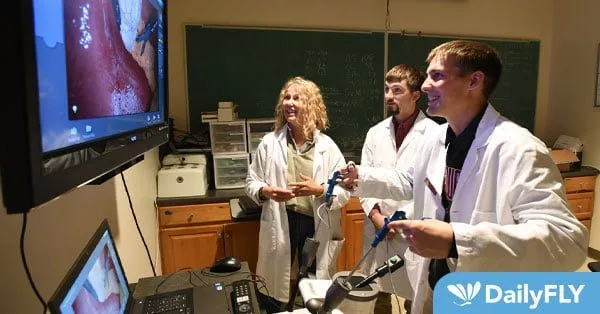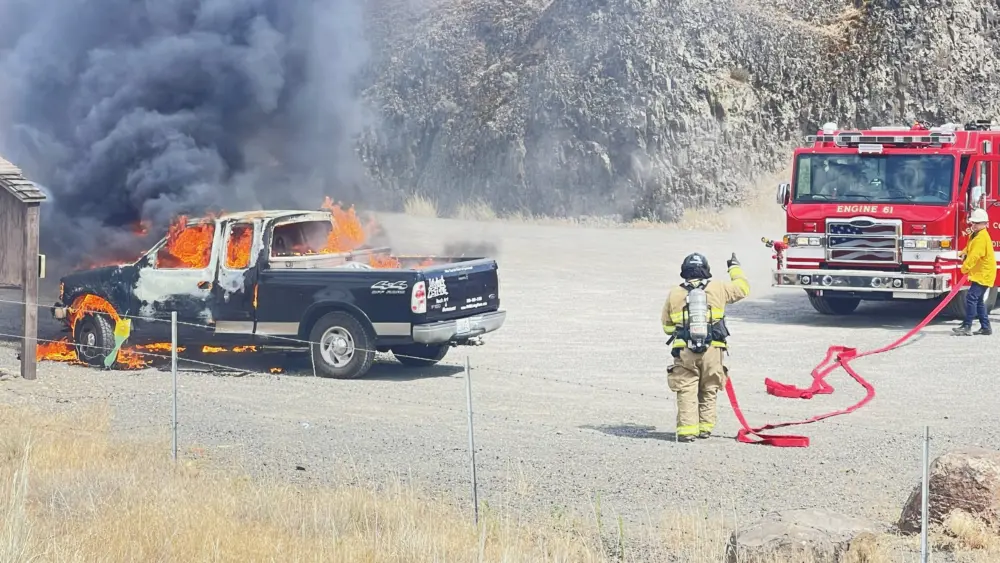PULLMAN – Veterinary surgeons training for laparoscopic surgeries could soon be able to perfect their skills in a virtual reality simulation before ever performing the procedures on live patients.
Washington State University veterinarian and professor Boel Fransson has been working with a supplier of virtual reality simulators for human medical training to develop the first virtual laparoscopic training program for veterinary surgeons. Fransson plans to demonstrate and test a preliminary version of the program and its curriculum during a lab session at the American College of Veterinary Surgeons’ annual Surgery Summit on Oct. 12 in Portland, Oregon.
“We haven’t had this sort of technology — it’s a game changer,” Fransson said. “The beauty with these systems is they give you an opportunity to make mistakes, and you will make mistakes when you first learn, but we don’t want those mistakes to happen in a live animal.”
Laparoscopic surgery is a surgical technique in which short, narrow tubes are inserted into the abdomen through small incisions. A tiny camera that feeds video to a monitor and long, thin instruments are inserted through the tubes, allowing surgeons to perform surgeries without the need for large incisions.
It is used for simple surgeries like spays and more advanced procedures like gastropexies, lung lobectomies, cholecystectomies and adrenalectomies. When compared to traditional surgeries, laparoscopic procedures result in less pain and faster recovery for patients.
To be effective and safe, the procedure requires precision and small movements, which can be difficult for inexperienced surgeons who must adjust to a loss of depth perception and a limited range of motion. Training opportunities, however, have been limited for veterinary surgeons, as only roughly one-third of the institutions training surgery residents have even basic training equipment.
At WSU, that has not been the case. In 2008, Fransson established the first veterinary laparoscopic training laboratory – the Veterinary Applied Laparoscopic Training laboratory – to help surgeons develop and practice the basic skills needed for the procedures. She also developed the Veterinary Assessment of Laparoscopic Skills program for training and assessment of veterinarians’ hands-on skills.
“Before we started the lab at WSU, no one was doing even basic skills training,” Fransson said.
The new virtual reality program is a step further and will allow veterinarians to simulate entire laparoscopic procedures, even potential complications that may arise during surgeries.
Through a temporary partnership with Surgical Science, Fransson has been adapting the company’s existing human simulations to veterinary medicine and developing training curriculum, including video tutorials and other educational materials, for specific surgeries.
“This is the best simulation that I have worked with,” Fransson said. “It can simulate tissues and how the tissues behave, how the instruments behave, so this opens up the opportunity to not only train the basic skills but to actually train surgeons how to do the surgery.”
There are currently some limitations with the program, including that the virtual components use human anatomy. Fransson has started with surgeries involving organs and areas in which humans and dogs are anatomically similar – like the gall bladder – but she is hopeful dog anatomy will eventually be simulated.
The current costs of the equipment and software will also be an initial barrier to the program being widely adopted.
“It is very costly technology,” Fransson said, “but in the end, it really benefits the animals. In the future, every surgery that we’re doing, we should have this type of training so veterinary surgeons can hone their skills.”





